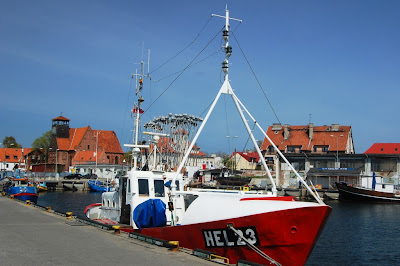Ania, Moli and I went for a day trip to
Miedzyrzecz Underground Fortification System (Miedzyrzecki Rejon Umocniony), taking advantage of the fact that they were open to the public because of the holiday (1st-3rd of May) season.
Miedzyrzecz Underground Fortifications were built on Adolf Hitler's orders between 1934 and 1938 close to what was then Polish-German border as part of preparations for a war against Poland (and Russia). The construction was halted in April 1938, when it was decided that defensive positions in the east of Germany were in fact unneccessary... Then again when things changed for the worse for Germany in 1944 some attempts were once again made to improve and extend the fortifications.
The Miedzyrzecz Underground Fortifications consist of more than 50km of concrete tunnels and corridors, munition chambers, barracks, and secret rooms, buried between 20 and 50 metres below ground. They are considered to be the longest underground defensive complex in the world. They are also famous for being a home to over 30,000 bats (luckily, we did not meet a single one of them).
Small part of these fortifications is open to the public during the summer season and I would definitely think that it is worth a visit. There are many guided tours through the bunkers that last between 2 and 6h. If I remember correctly our tour lasted around 3h during which we walked through 5km of underground tunnels - part of that time in almost complete darkness, having only a few small flash lights to help us see the way... That was definitely a very interesting experience on its own.
Looking at this beautiful landscape, would you guess a secret its underground holds?

Military equipment display at the museum:


Dragon's teeth (tank defences) and 1945 independence monument at Kalawa:

Steel domes of the bunkers:

The underground tunnels of Miedzyrzecz Underground Fortification System, with a flash:

... and without the flash (
try to imagine how you would feel walking in such almost-complete-darkness, many meteres underground, and without a clue how to get out from there in case you loose the guide...):


Detailed google map of Miedzyrzecz Underground Fortifications:
Wyświetl większą mapę





















































